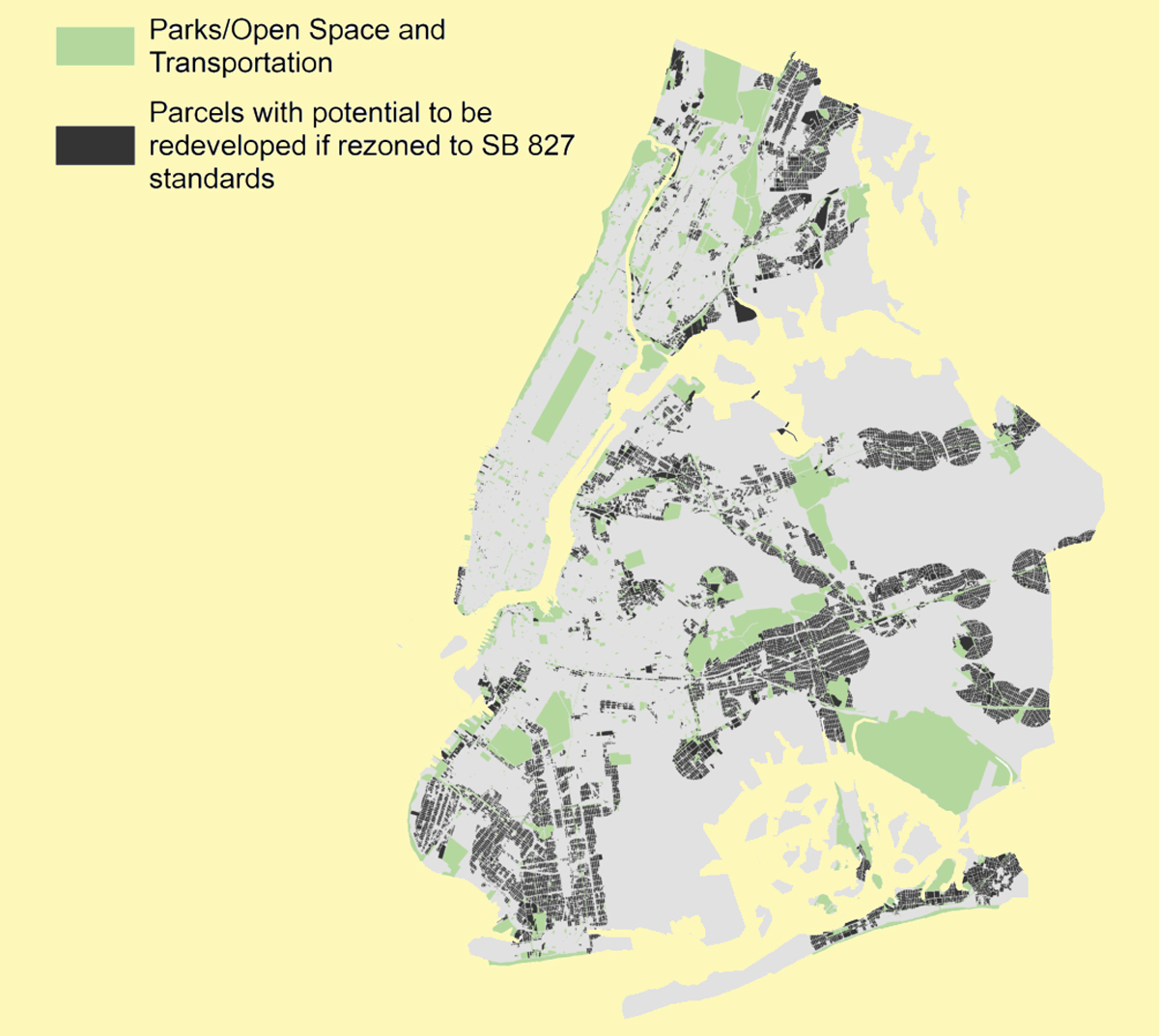Trending
NYC isn’t building enough residential density near transit: report
To match proposed legislation in California, the city would have to largely increase building heights

New York City isn’t taking full advantage of its transit infrastructure when it comes to housing density along transportation routes, according to the Regional Plan Association.
Officials in California have proposed a bill to deal with the state’s housing shortage that would require at least eight-story buildings on wide streets that lie within a five-minute walk of transit, and buildings at least four or five stories tall on narrow streets that are up to 10 minutes from the nearest stop. If that law were applied in New York, the RPA found that 85 percent of the city would need to increase density in order to comply, Crain’s reported.
“New York’s zoning isn’t as transit-friendly as you might think,” authors Moses Gates and Sarah Serpas wrote in an RPA blog post.
Large swaths of Brooklyn and Queens have densities that are far too low, considering their access to high-quality transit, the RPA found. Sections of Midwood and Forest Hills, for example, only allow for single-family homes, despite their proximity to express subway stops.
“Not allowing more homes where they make sense — near jobs and transit — means we either have to build them where they don’t make sense, or not build them at all,” the RPA authors wrote. “Either way, it leads to worse commutes, more crowding and a more expensive and less livable city.”
The RPA earlier this year released a report recommending repealing a 1961 state law that limits the square footage of residential buildings to a floor-to-area ratio of 12. The State Senate earlier this week introduced a bill eliminating the limit, though it faces long odds in Albany. [Crain’s] – Rich Bockmann




